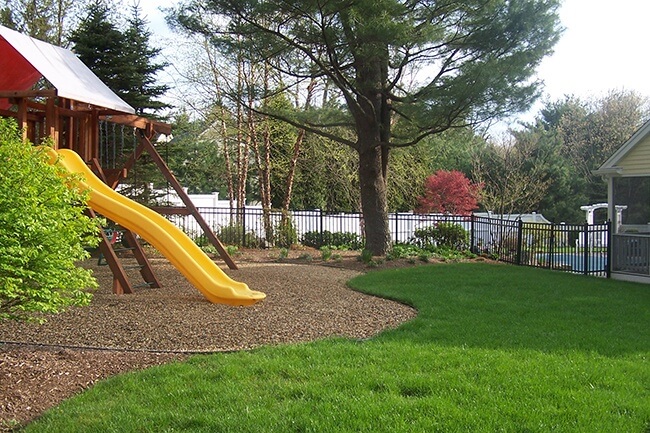One of the most difficult landscape elements is fences. People often install fences without first thinking the project through and the less-than-satisfactory results can range from simply inappropriate to downright claustrophobic.
People use fences to create privacy, but they don’t know that there are three levels of privacy. Full, moderate, and suggested. This is a type privacy that creates an illusion of intimacy or separateness. The light or low screening doesn’t hide anything, but it does suggest that the space is isolated from the rest. You can focus on the right materials and designs to achieve that level of privacy by knowing what you want.
Begin by determining which areas of your property need the most privacy. Next, work your way down to the areas that need the least privacy. This helps you narrow down your options for fence materials and design.
These are the 5 Best Ways to Use Fences In A Landscape
Choose the right fencing materials and designs to provide privacy.
It may surprise you to learn that fencing comes in a wide variety of styles and materials. If you think creatively and consider privacy levels, it might be surprising. You can think of a creative blend of fencing, hedge, mixed border plantings, or focal pieces like natural formations depending on your privacy level. You can create privacy screens without having to build a barrier by mixing and matching materials and elements.
When plants can do the same, don’t make fences.
Sometimes homeowners will put up fences that are 6-8 feet high to create privacy. However, the end result may not be what they envisioned. Walls outside are something humans don’t like. They create a feeling of being surrounded or blocked, which can make people feel uncomfortable and even trapped. Consider whether a fence or a wall would be a better choice for you if you need privacy. A thick hedge of evergreens as your fence might provide more privacy than any other structure.
The fence height should be matched with the privacy and security you require.
Children and pets are different in their security requirements. To create a barrier or boundary to confine them, you can install low, open fencing to provide good lines of view and keep your property feeling open. If you need more privacy and don’t have enough space to plant thicker or mixed plants, you might consider raising the fence to five to six feet. This will allow you to be out of sight when you sit down.
Match your fencing with the privacy requirements
When you want privacy at different levels, perspective is crucial. If you have a fence that blocks you from the view outside, it could make your breakfast nook visible to the neighbor. Even though the ground floor may be three, four, or more feet higher than the ground outside, it can still block your view. No acceptable fence should block the view from the second floor windows. You don’t want your neighbor to be able to see you as you get dressed in your bedroom. Consider planting deciduous leafy trees like a sugar maple, riverbirch, or an elm tree. Their crown will block the view from the second floor.
A fence is not enough to block wind or sound.
Many people are surprised to learn that fences do not block traffic noise or the northeast wind. Airflow science shows that moving air can flow up and over fences and gain speed on the opposite side. Unfortunately, the fence does not block wind but actually increases it.
Most fencing is susceptible to sound. To absorb sound, you can add a mixture of deciduous and evergreen plants to either side of your fence.

